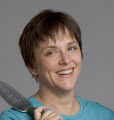
Win a copy of Art
Wolk's informative and hilarious book,"
Bulb Forcing: for beginners and the seriously smitten." All you have to do is comment directly below this post or for the tech
challenged, email me and I'll add your comment section: 75 words or less describing your greatest success
or failure in bulb forcing.
Garden Bytes publishers Ellen
Spector Platt and Ellen
Zachos will judge your comments and announce the winner on the blog. Entry deadline, Jan 2, 2012. The book is a beautiful hardback, signed by the author, published at $32.95 with free shipping courtesy of
GardenBytes.com .

(above,
Crocus tomasinianus, 'Ruby Giant' forced in a pot)
Now is the time for New York City gardeners and all urban gardeners with tiny or non-existent outdoor spaces to think of growing bulbs indoors.
Ok, you people with huge gardens are also invited to add the pleasure of winter blooms to your indoor space.
I've been forcing bulbs since girlhood but as I read
Wolk's book I kept thinking with wonderment, 'I didn't know that.' He reveals all from his vast experience; how using a heat mat under a pot or increasing room heat forces the two or three amaryllis flower stalks within a bulb to shoot up and bloom simultaneously for a grand display.
I never realized that tap water that contains fluoride would probably kill the freesias I was trying to force (
OMG, so THAT'S why...) Try layering your bulbs, explore a different species like anemones or
ranunculus, plant a multi-species pot.
 (three photos above courtesy Art Wolk, from his book "Bulb Forcing." Directly above, Wolk's 13-division daffodil display at the 1999 Phila. Flower Show)
(three photos above courtesy Art Wolk, from his book "Bulb Forcing." Directly above, Wolk's 13-division daffodil display at the 1999 Phila. Flower Show)Maybe you don't want to compete for the big blue ribbon wins as
Wolk does. I'm happy with a few hyacinths in water in a color to compliment my new gift African violet (see below). But in
"Bulb Forcing" I discovered why my hyacinth stems are so short. If you want to learn the secret, win the book, or even (gasp) buy it.

 Up on the rooftop Christmas day, in my container garden, not Santa but Rosa'Graham Thomas',
Up on the rooftop Christmas day, in my container garden, not Santa but Rosa'Graham Thomas', the annual Calibrachoa 'Million Bells',
the annual Calibrachoa 'Million Bells', new self-seeded calendula plants and California poppies, waiting to bloom.
new self-seeded calendula plants and California poppies, waiting to bloom. and at my bus stop, a few flowering pear blossoms.
and at my bus stop, a few flowering pear blossoms.




















